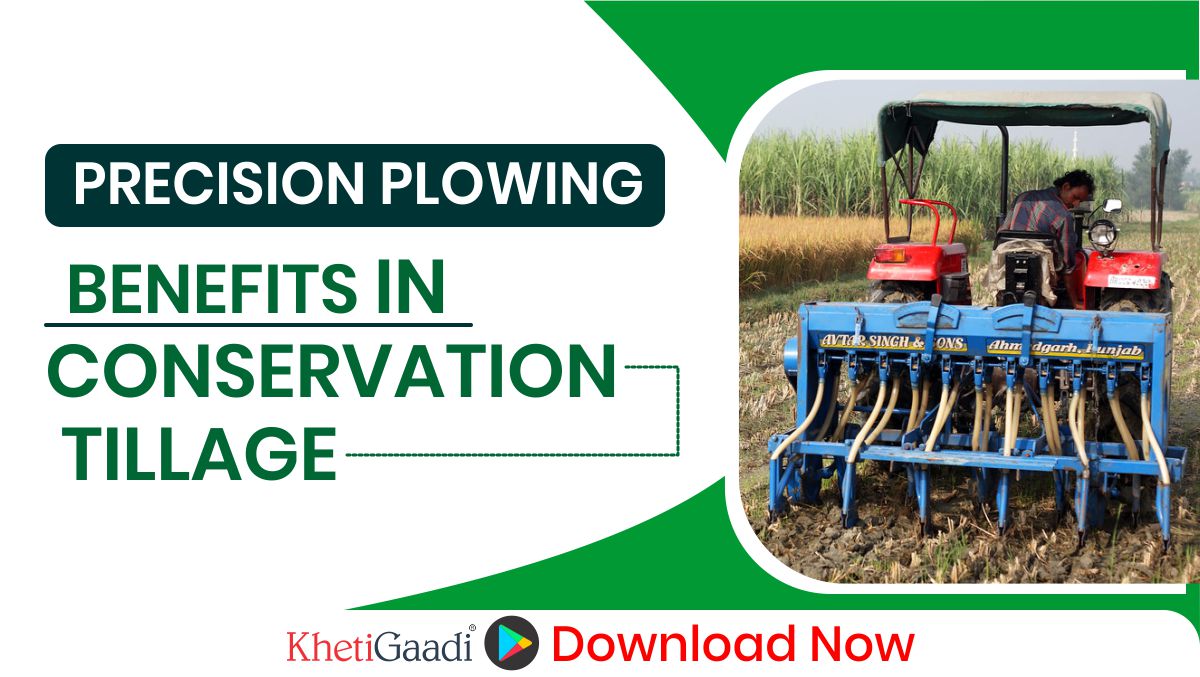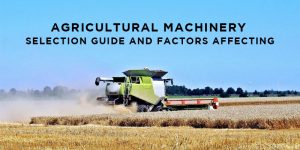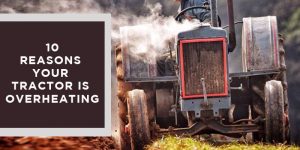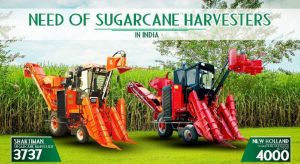Climate-smart agriculture: Conservation tillage is an agricultural practice that conserves soil by limiting or eliminating traditional tillage methods. It seeks to improve soil health, minimize erosion, and conserve water and energy resources. Hence, the conservation tillage guided the farmers to get over their age-old plough system and thus welcome the modern and better system.
So here comes the question—what is tillage? Tillage is the soil’s mechanical agitation, such as ploughing or cultivation, in preparation for planting. Moreover, it breaks up and aerates the soil, helping in the preparation of the seedbed and the distribution of nutrients for crops.
This farming practice has gained interest for its benefits to soil health, water conservation, and overall environmental sustainability.
We’ll give you the lowdown on conservation tillage, including its benefits and more.
Defining Conservation Tillage:
Before we get into the benefits, let us have an idea of what conservation tillage is. Soil disturbance is minimized, and the crop residues from the previous harvest remain on the field. Besides, traditional tillage is the process of flipping over the soil to prepare individual sоlе for growing. In addition, conservation tillage equipment and machinery help in easy and smooth farming for farmers.
Soil Health Improvement:
You won’t destroy the structure of the soil with conservation tillage. Allowing crop residues to remain in the field serves as a biodegradable blanket, protecting against soil erosion and climate extremes while encouraging moisture. They shield the soil from rain and wind to keep it fertile so we can keep farming successfully.
Water Conservation:
Benefits of Conservation Tillage: Water Conservation. One of the major benefits of conservation tillage is its effects on water conservation. This results in the residue cover remaining on the field and promoting much less runoff, so more water can enter the soil. So, this is especially important in areas that are struggling with water scarcity.
Effects of tillage on soil erosion:
Additionally, soil erosion is accelerated by intensive tillage, which disrupts the soil structure, exposing the soil to erosive forces of wind and water, resulting in the loss of productive topsoil. Practice reduced/no-till for soil conservationReduced/no till practices reduce soil erosion, help maintain flexibility and integrity of the soil, and contribute to sustainable land management.
Reduced Soil Erosion:
Regular ploughing leads to soil erosion, as bare soil is more prone to wind and water erosion; reduced or conservation tillage acts like a protective coat. It’s stopping the topsoil from blowing away. This also saves the soil and keeps the adjacent water bodies from sedimentation.
Enhanced Organic Matter:
Crop residues lying on the ground decompose (over time) and provide organic matter to the soil. This organic matter acts as a natural fertilizer, adding essential nutrients to the soil. Higher organic matter levels can result in better structure, aeration, and microbiology, which allows for more developed plants.
Energy and Cost Savings:
In conservation tillage, fewer machines and fuel are required than in ploughing. However, if implemented correctly, conservation tillage can lead to some savings from energy costs and therefore reduce carbon emissions from the farm. And being more cost-effective can lead to farmers staying in business in the long run.
- Time Efficiency:
Conventional ploughing is a slow process that requires numerous passes across the field, but a very effective activity for soil fertility. Using conservation tillage makes planting simpler as there is no soil. This time efficiency allows farmers to focus on other aspects of crop management, which in turn contributes towards increased overall farm productivity.
- Weed Suppression:
The residue cover remaining on the ground helps suppress wееd formation. As the lifecycle unfolds, actual weeds find it hard to percolate through the crop residue, which automatically reduces the use of herbicide. Such natural weed suppression is not just eco-friendly but also a big savior device for farmers.
- Enhanced Organic Matter:
But in-field crop residues decay over time and contribute organic matter to the soil. The organic matter is helpful as a natural fertilizer in the soil. When allowed to decay in soil, this increased organic matter increases soil structure and aeration as well as microbial activity, which provides a healthier environment for plant growth.
- Energy and Cost Savings:
Conservation tillage uses less equipment and fuel than traditional ploughing. Conservation tillage practices can help farmers cut down energy costs and carbon emissions, though. This financial benefit can play a role in the sustainability of the farm operations in the long run.
- Time Efficiency:
Classical ploughing is a slow activity requiring several passes over the field, but a very effective activity for soil fertility. Soil preparation is not required with conservation tillage; thus, the planting process gets simplified. This time saver gives farmers valuable time to focus on other areas of crop management, thus boosting overall farm productivity.
- Weed Suppression:
The residue cover remaining on the field helps prevent weed growth. Because weeds have difficulty emerging in the crop residues, less research is needed about herbicides, and weed suppression occurs naturally, which is environmentally friendly and also saves costs for farmers.
- Climate Change Mitigation:
Proceeding with conservation tillage is our answer to the battle against pollution. Land use change and reduced soil disturbance, as well as the use of crop residues that promote carbon sequestration, help to offset greenhouse gas emissions from this practice. Farming methods such as conservation tillage act as a contributory global effort to combat climate change.
Also, conventional tillage and conservation tillage are the operations of soil in agriculture.
Implementation: This is via no-till, strip-till, or reduced tillage systems.
Conventional Tillage:
Features: Involves intensive soil inversion, intensive tillage through ploughing and harrowing, and other mechanical operations that are used to prepare a clean and finely cloudless surface for the formation of the seed bed.
So too, tillage tools are food or tractor implements that cook and farm till the cropland is prepared. The tool used for tillage is known as a tiller, which is used to change the makeup of soil and make it a seedbed for crops.
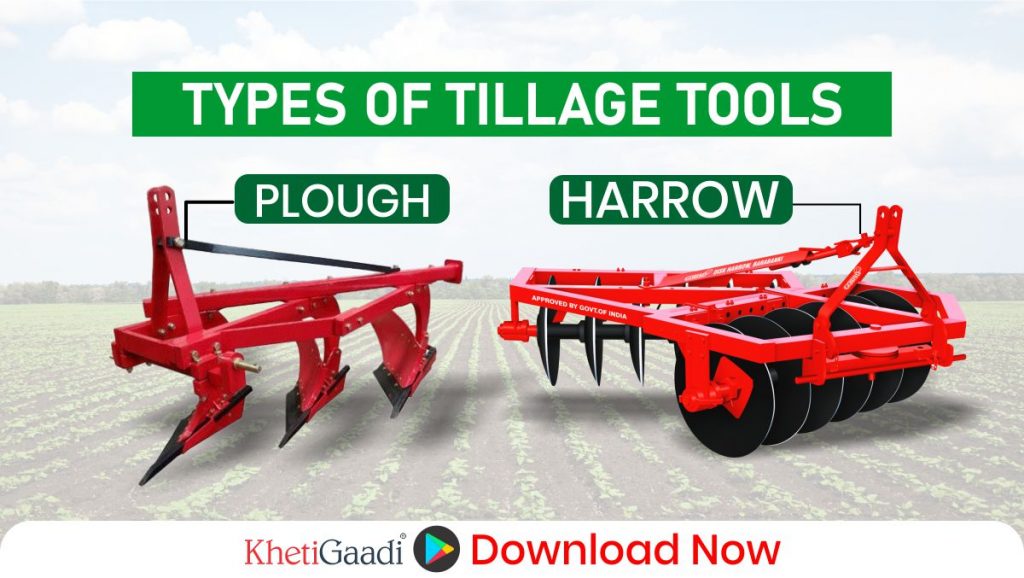
Like, there are different kinds of tillage tools, each with its own function in the soil preparation process. plough, harrows, cultivators, and disc harrows are common tillage tools
We use tillage for these tools to break up soil, suppress weeds, and improve soil structure, which provides ideal conditions for seed germination and crop growth. Tillage tools such as chisel plough, disk harrows, and tines are commonly used, and their use is determined by various factors, including soil type, crop type, and the farmer’s goals in that regard.
Besides that, all tillage equipment has two separate classifications: one is primary tillage tools, and the second is secondary tillage tools.
Primary Tillage Implements
It plays a very vital role in seedbed preparation and crop growth, as primary tillage implements are used for this purpose. These tools are like heavy-duty workers in a field, breaking up and turning over the soil for the first time.
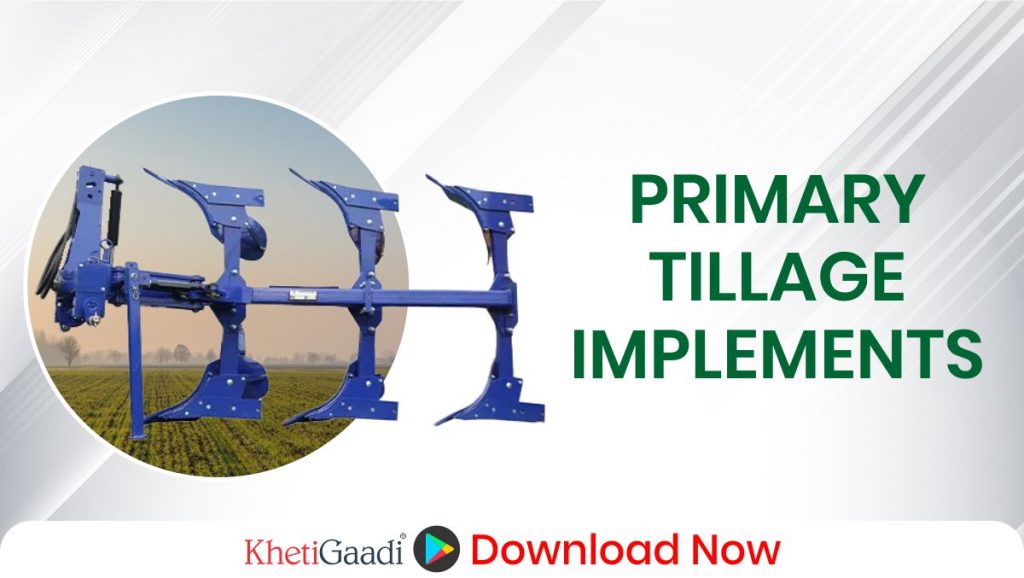
Secondary Tillage Implements
Similarly, secondary tillage tools are detail-oriented workers. They refine the soil after primary tillage, smoothing and providing a better surface for planting. They include harrows and cultivators.
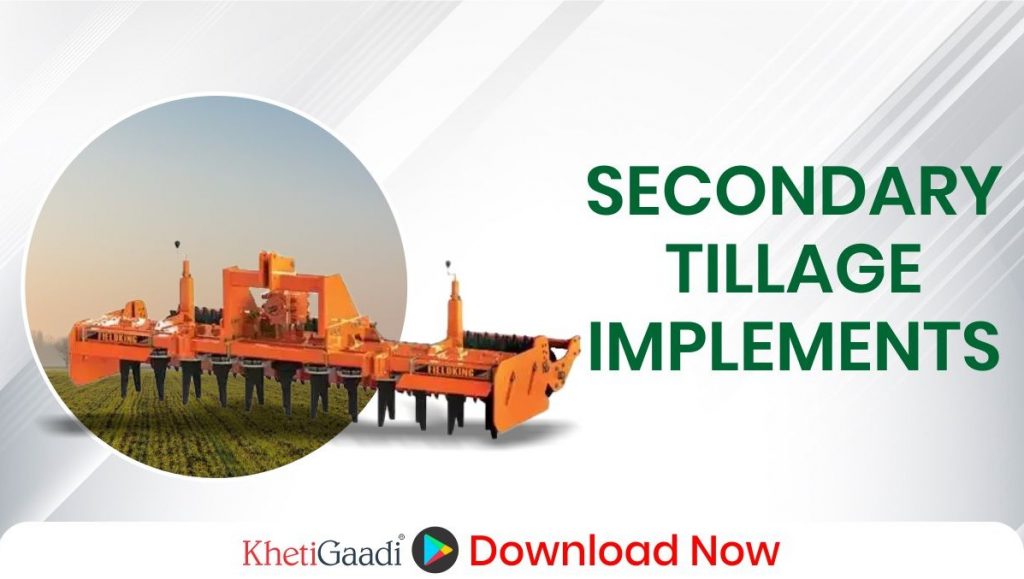
Tillage equipment: primary versus secondary tillage
Furthermore, knowing the differences between primary and secondary tillage equipment is important for farmers to understand to get the soil prepared and grow a successful crop.
No-till farming
Farming without tillage or zero tillage farming, is a farming practice in which the soil is not disturbed or is not touched at all between two planting seasons. No-till agriculture keeps crop residues on the field and retains soil structure with no ploughing.
Thus, this method helps to prevent soil erosion, keep the moisture, and increase biodiversity. This conservation approach avoids excessive soil dependency to improve soil health, reduce carbon emissions, and increase water conservation.
Farmers employing such an approach not only own lower labor and fuel costs, but also benefit from long-term environmental and economic advantages with major agricultural practices.
Advantages of no-till farming?
Yes, no-till farming has several advantages regarding sustainable agriculture and environmental time:
- Soil Conservation:
To reduce soil erosion by leaving crop residues on the field so that water and wind won’t wash or blow away the topsoil.
2. Moisture Retention:
Tightens up soil moisture by decreasing disturbance, which also helps crop passes to deal with drought events and contributes to water conservation.
3. Improved Soil Structure:
Improves soil structure and stability by minimizing the compaction associated with traditional ploughing, thus allowing for better root development and ultimately better protein assimilability.
4. Biodivеrsity Promotion:
Allows natural habitats to be retained and biodiversity encouraged by keeping a more harmonized and undisturbed environment, of course, directly for top soil organisms.
5. Reduced Carbon Emissions:
It also reduces carbon emissions associated with ploughing and other tillage operations and thus helps in climate change mitigation.
Farming without tillage is a key strategy in conservation agriculture and not only allows farmers to produce more sustainable crops but also provides an environmentally friendly solution.
Conclusion:
Thus, soil health, water analysis, and even the regional well-being of the environment are no longer blinded and driven; in the realm of plough to precision, this is a development, a method with a modern, man-mind touch. As a result, farmers are turning more and more to the promise of more sustainable farming practices, a world of conservation tillage, for a greener and more resilient future of our agricultural landscapes.
Stay updated with real-time agriculture news, innovative farming techniques, and government schemes by following our WhatsApp channel and visiting KhetiGaadi.

